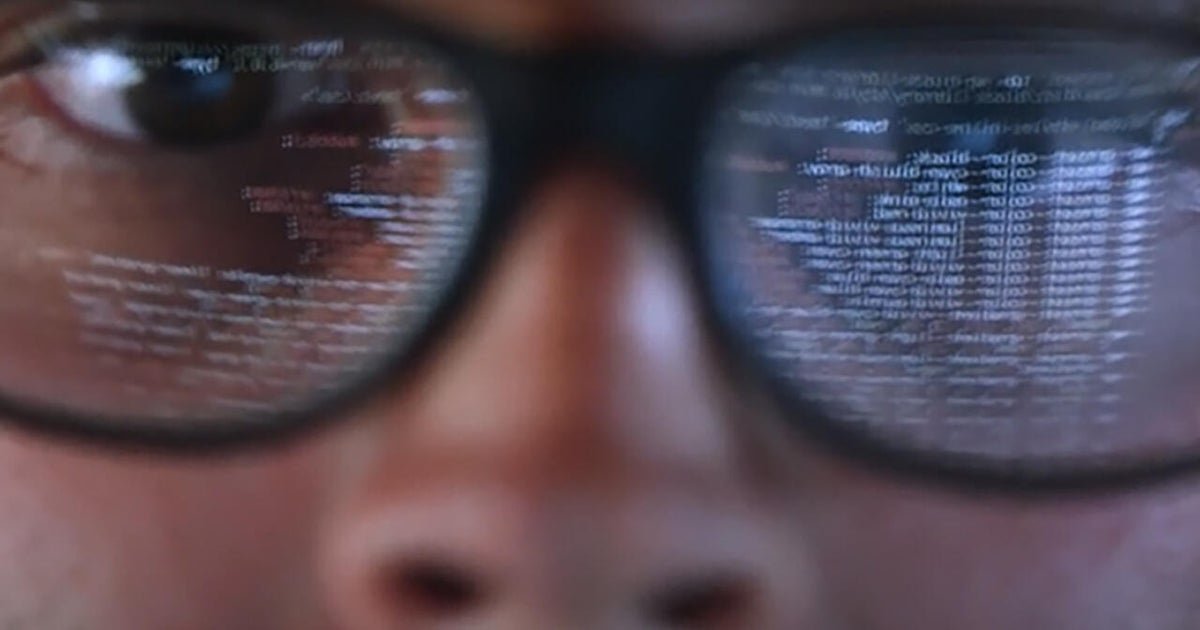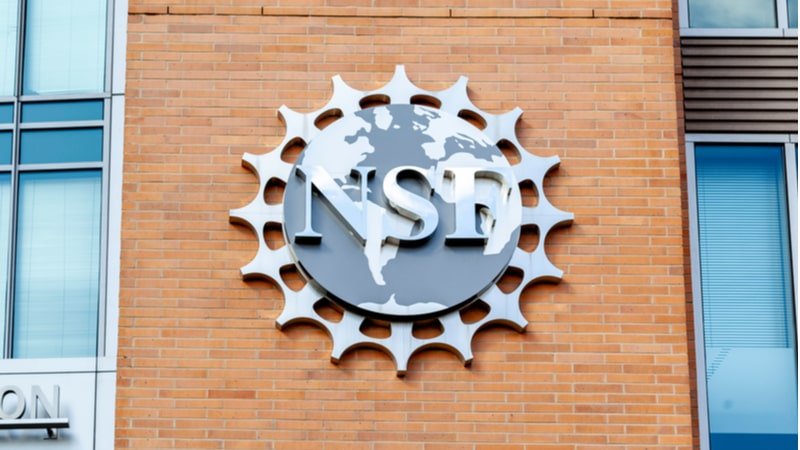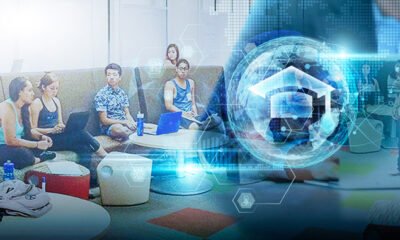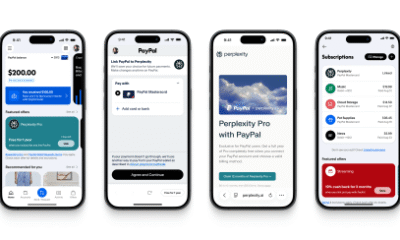AI Research
How is artificial intelligence affecting job searches?

Artificial intelligence programs like ChatGPT use AI to do thinking or writing or creating for you. Pretty amazing, but also a little terrifying. What happens to the people who used to do those jobs?
Olivia Fair graduated four years ago. “I’ve applied to probably over a hundred jobs in the past, I don’t know, six months,” she said. “And yeah, none of them are landing.”
She’s had a series of short-term jobs – one was in TV production, transcribing interviews. “But now they don’t have a bunch of people transcribing,” she said. “They have maybe one person overseeing all of that, and AI doing the rest. Which I think is true for a lot of entry-level positions. And it can be a very useful tool for those people doing that work. But then there’s less people needed.”
According to Laura Ullrich, director of economic research at Indeed, the job-listings website, job postings have declined year over year by 6.7 percent. “This is a tough year,” she said. “Younger job seekers, specifically those who are recent grads, are having a harder time finding work.”
Asked if there is a correlation between the rise in AI and the decline in jobs for recent graduates, Ullrich said, “I think there is a cause-and-effect, but it’s maybe not as significant as a lot of people would think. If you look specifically at tech jobs, job postings are down 36% compared to pre-pandemic numbers. But that decline started happening prior to AI becoming commonly used.”
Ullrich said in 2021-22, as the effects of the COVID pandemic began to ebb, there was a hiring boom in some sectors, including tech: “Quite frankly, I think some companies overhired,” she said.
The uncertain national situation (tariffs, taxes, foreign policy) doesn’t help, either. Ullrich said, “Some other people have used the analogy of, like, driving through fog. If it’s foggy, you slow down a bit. But if it’s really foggy, you pull over. And unfortunately, some companies have pulled over to sit and wait to see what is gonna happen.”
That sounds a little more nuanced than some recent headlines, which make it pretty clear that AI is taking jobs:
“I read today an interview with a guy who said, you know, ‘By 2027, we will be jobless, lonely, crime on the streets,'” said David Autor, a labor economist at MIT. “And I said, ‘How do I take the other side of that bet?’ ‘Cause that’s just not true. I’m sure of that. My view is, look, there is great potential and great risk. I think that it’s not nearly as imminent on either direction as most people think.”
I said, “But what it does seem to do is relieve the newcomers, the beginning, incoming novices we don’t need anymore.”
“This is really a concern,” Autor said. “Judgment, expertise, it’s acquired slowly. It’s a product of immersion, right? You know, how do I care for this patient, or land this plane, or remodel this building? And it’s possible that we could strip out so much of the supporting work, that people never get the expertise. I don’t think it’s an insurmountable concern. But we shouldn’t take for granted that it will solve itself.”
Let’s cut to the chase. What are the jobs we’re going to lose? Laura Ullrich said, “We analyzed 2,800 specific skills, and 30% of them could be, at least partially, done by AI.” (Which means, 70% of job skills are not currently at risk of AI.)
So, which jobs will AI be likely to take first? Most of it is jobs in front of a screen:
- Coding
- Accounting
- Copy writing
- Translation
- Customer service
- Paralegal work
- Illustration
- Graphic design
- Songwriting
- Information management
As David Autor puts it: “What will market demand be for this thing? How much should we order? How much should we keep in stock?”
AI will have a much harder time taking jobs requiring empathy, creative thinking, or physicality:
- Healthcare
- Teaching
- Social assistance
- Mental health
- Police and fire
- Engineering
- Construction
- Wind and solar
- Tourism
- Trades (like plumbing and electrical)
And don’t forget about the new job categories that AI will create. According to Autor, “A lot of the work that we do is in things that we just didn’t do, you know, 50 or 100 years ago – all this work in solar and wind generation, all types of medical specialties that were unthinkable.”
I asked, “You can’t sit here and tell me what the new fields and jobs will be?”
“No. We’re bad at predicting where new work will appear, what skills it will need, how much there will be,” Autor said, adding, “There will be new things, absolutely.”
“So, it sounds like you don’t think we are headed to becoming a nation of people who cannot find any work, who spend the day on the couch watching Netflix?”
Autor said, “No, I don’t see that. Of course, people will be displaced, certain types of occupations will disappear. People will lose careers. That’s going to happen. But we might actually get much better at medicine. We might figure out a way to generate energy more cheaply and with less pollution. We might figure out a better way to do agriculture that isn’t land-intensive and so ecologically intensive.”
Whatever is going to happen, will likely take a while to happen. The latest headlines look like these:
Until then, Laura Ullrich has some advice for young job seekers: “The number one piece of advice I would give is, move forward. So, whether that is getting another job, getting a part-time job, finding a post-graduate internship – reach out to the professors that you had. They have a whole network of former students, right? Reach out to other alumni who graduated from the school you went to, or majored in the same thing you majored in. It might be what gets you a job this year.”
So far, Olivia Fair is doing all of the above. I asked her, “You’re interested in creativity and writing and production. So let me hear, as a human, your pitch, why you’d be better than AI doing those jobs?”
“Okay,” Fair replied. “Hmm. I’m a person, and not a robot?”
For more info:
Story produced by Gabriel Falcon. Editor: Chad Cardin.
See also:
AI Research
NSF Plans New AI Research Operations Hub – MeriTalk

The National Science Foundation (NSF) said on Wednesday that it is looking to open a National Artificial Intelligence Research Resource Operations Center (NAIRR-OC) to arm the nation’s researchers and educators with critical AI tools and resources.
In a solicitation, NSF said that it is aiming to build on its National AI Research Resource (NAIRR) pilot by building sustained operational capabilities for NAIRR and broadening access to AI resources for the research community, which largely lacks the tools and resources “to investigate fundamental AI questions and train students.”
NAIRR was launched in January 2024 and serves as a shared national infrastructure to support the AI research community and power responsible AI use.
“The NAIRR Operating Center solicitation marks a key step in the transition from the NAIRR Pilot to building a sustainable and scalable NAIRR program,” said Katie Antypas, director of the NSF Office of Advanced Cyberinfrastructure.
“We look forward to continued collaboration with private sector and agency partners, whose contributions have been critical in demonstrating the innovation and scientific impact that comes when critical AI resources are made accessible to research and education communities across the country,” continued Antypas.
Specifically, NSF’s solicitation asks for proposals to create a community-based center to oversee “the development of the overarching framework, operations strategy and management structure needed to support the NAIRR’s scaling and growth.”
That includes integrating advanced computing and data resources, a centralized web portal with access to tools, and collaborating with partner organizations, while conducting outreach and engagement with the national AI research community.
NSF said that the NAIRR-OC will directly carry out priorities in the Trump administration’s AI Action Plan, released in July, which said that the federal government should “build the foundations for a lean and sustainable NAIRR operations capability that can connect an increasing number of researchers and educators across the country to critical AI resources.”
Since NAIRR’s launch, it has connected 400 research teams with computing platforms, datasets, software, and models, and is partnering with 28 industry members and supported by 14 federal agencies, according to NSF.
AI Research
Harnessing AI to unlock the power of data for business success

AI Research
Greek humanoid Olympiad reveals robots are far behind artificial intelligence — OODAloop

Greece recently witnessed the world’s first International Humanoid Olympiad in Olympia, where humanoid robots played boxing and soccer matches to attain glory. The event, held from August 29 to September 2, was organized by Acumino and Endeavor, who invited industry leaders to line up as speakers, apart from the smart machines displaying their abilities. While humanoid robots have increasingly gained popularity for mirroring human actions, we have yet to see them involved in routine household chores like washing dishes and tidying closets. AI has advanced explosively in the past year through applications like ChatGPT, but the same cannot be said about its physical cousins – the humanoid robots. Humanoid robots are miles behind in learning from data compared to AI software and tools. Minas Liarokapis, a Greek academic and startup founder who organized the Olympiad, made a rather bold prediction regarding humanoids becoming a helping hand in the kitchens and other household chores. “I really believe that humanoids will first go to space and then to houses … the house is the final frontier,” she told the Associated Press (AP) on Tuesday.
Full report : Humanoid robots lack data to keep pace with explosive rise of AI.
-

 Business5 days ago
Business5 days agoThe Guardian view on Trump and the Fed: independence is no substitute for accountability | Editorial
-
Tools & Platforms3 weeks ago
Building Trust in Military AI Starts with Opening the Black Box – War on the Rocks
-

 Ethics & Policy1 month ago
Ethics & Policy1 month agoSDAIA Supports Saudi Arabia’s Leadership in Shaping Global AI Ethics, Policy, and Research – وكالة الأنباء السعودية
-

 Events & Conferences4 months ago
Events & Conferences4 months agoJourney to 1000 models: Scaling Instagram’s recommendation system
-

 Jobs & Careers2 months ago
Jobs & Careers2 months agoMumbai-based Perplexity Alternative Has 60k+ Users Without Funding
-

 Education2 months ago
Education2 months agoVEX Robotics launches AI-powered classroom robotics system
-

 Funding & Business2 months ago
Funding & Business2 months agoKayak and Expedia race to build AI travel agents that turn social posts into itineraries
-

 Podcasts & Talks2 months ago
Podcasts & Talks2 months agoHappy 4th of July! 🎆 Made with Veo 3 in Gemini
-

 Podcasts & Talks2 months ago
Podcasts & Talks2 months agoOpenAI 🤝 @teamganassi
-

 Education2 months ago
Education2 months agoAERDF highlights the latest PreK-12 discoveries and inventions





















